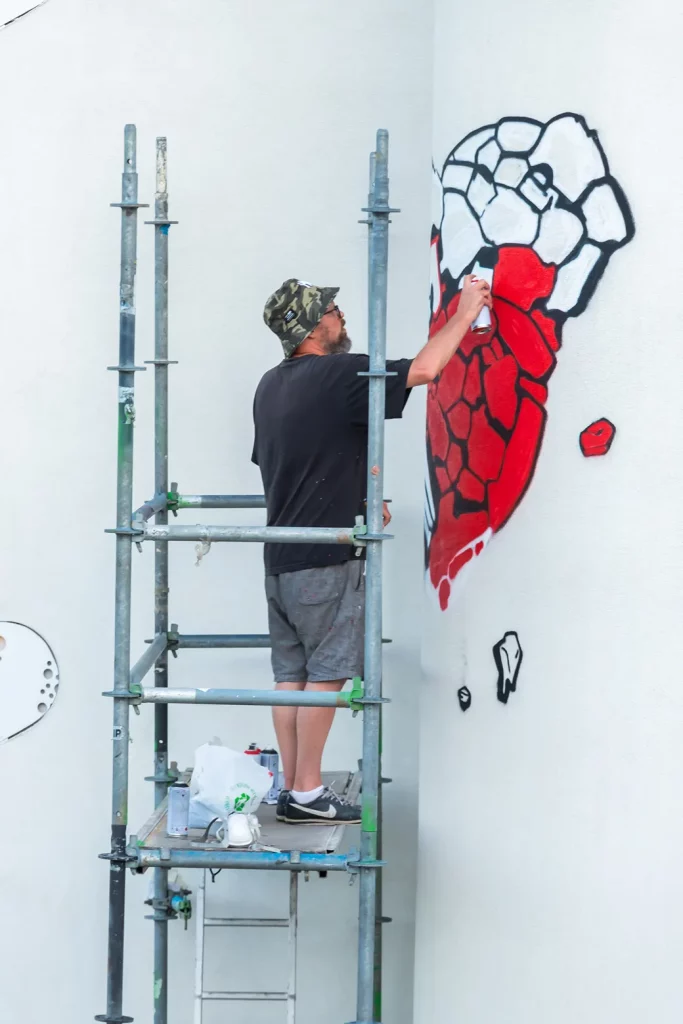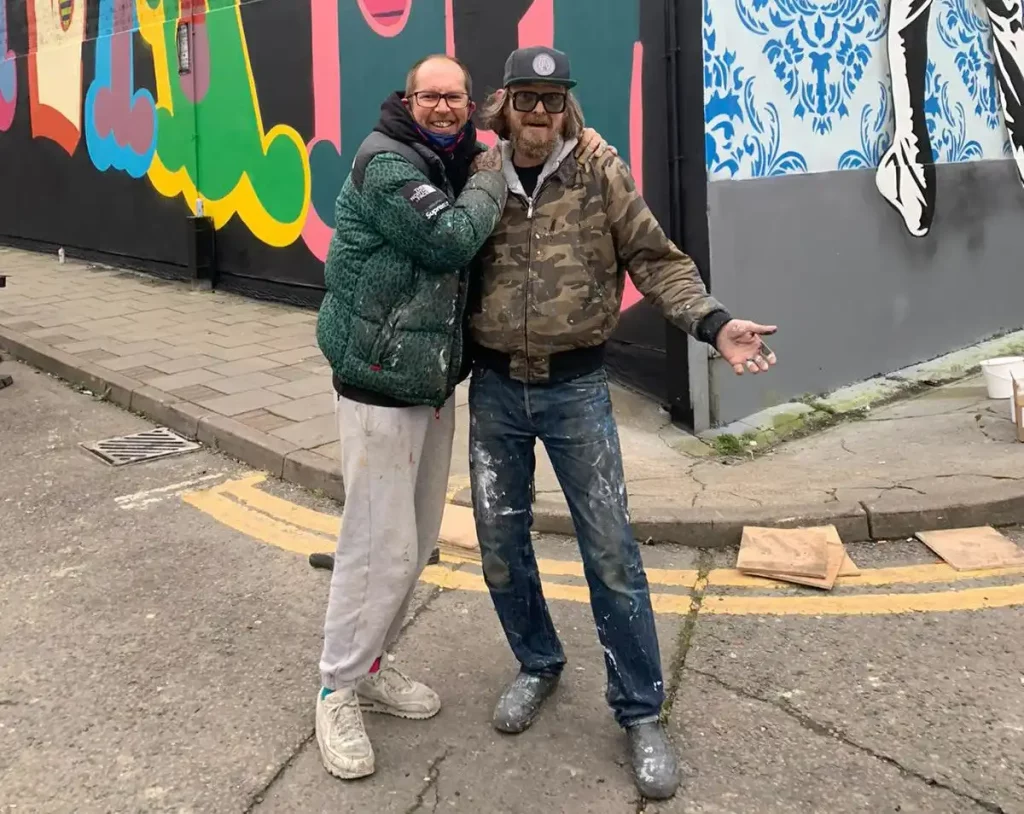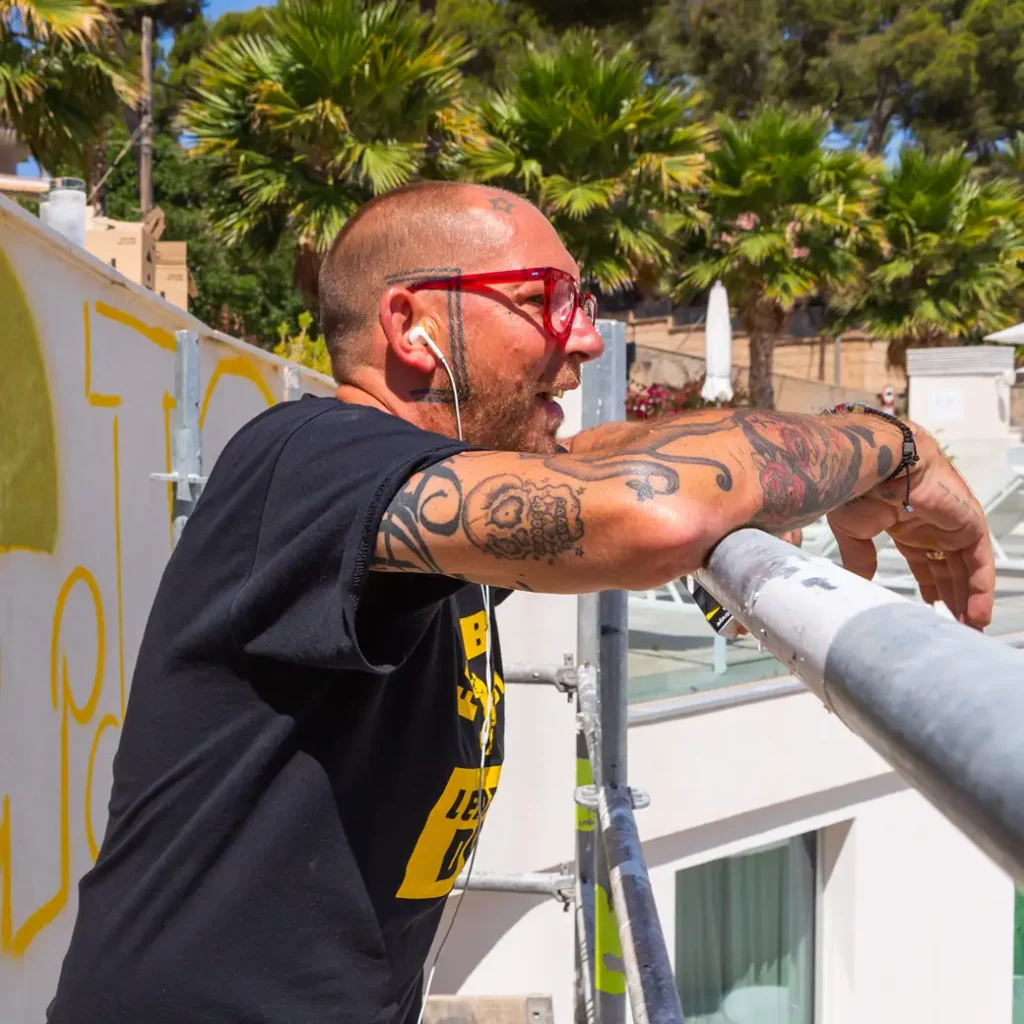In the vibrant world of urban art, powerful narratives emerge from the spray cans and stencils of talented artists. Urban art has transcended its humble beginnings to become a medium for addressing pertinent social issues, sparking discussions, and advocating for change. This blog post dives into the transformative works of Nick Walker, Banksy, Shepard Fairey, The Dotmaster, and Ben Eine, showcasing how these artists use their creations as a platform to address current societal issues.

Challenging Urbanization and Identity
Renowned artist Nick Walker employs his signature “Vandal” series to reflect on urbanization, identity, and the consequences of rapid development. His art often portrays a suited figure wielding a paint roller, emblematic of the modern corporate world’s attempts to control urban landscapes. Walker’s pieces encourage viewers to question the balance between progress and preservation. He also highlights the homogenization of cities and the fading individuality of their inhabitants.
A Provocative Lens on Global Issues

Banksy, perhaps the most famous urban art artist, uses his anonymity as a powerful tool to address an array of global issues. His satirical stencils challenge systemic problems such as capitalism, consumerism, and political oppression. Banksy’s “Girl with a Balloon,” transformed into “Love Is in the Bin,” exemplifies his subversive approach by critiquing the commodification of art itself. His work resonates globally, as it forces us to confront the uncomfortable truths of our society.
Amplifying Activism and Awareness

Shepard Fairey is one of the most famous urban art artists, known for the iconic “Hope” poster of Barack Obama. He merges art and activism to provoke change. His “Obey Giant” campaign, featuring the stylized image of wrestler André the Giant, has evolved into a platform for addressing inequality and raising social consciousness. Fairey’s diverse portfolio includes thought-provoking pieces like “We the People” and “Protect Each Other,” aiming to empower marginalized communities and promote unity.
Illuminating Consumer Culture

The Dotmaster, with his subversive take on consumer culture, challenges our perceptions of everyday objects. His urban art often transforms recognizable icons into symbols of critique. His brilliant high-fashion bags tackle consumerism with the fragility of life, highlighting society’s skewed priorities. Through wit and visual juxtaposition, The Dotmaster invites viewers to reassess the value we place on materialism.
Making a Statement with Typography

Ben Eine’s typography-based urban art has a distinctive voice in the realm of social commentary. His vibrant and bold letters, often spelling out impactful words or phrases, disrupt the urban landscape and prompt introspection. Ben’s typography-based urban art is a powerful force for social commentary. It is because it leverages visual impact, concise messaging, accessibility, integration with the urban landscape, thought-provoking qualities, and community engagement.
Urban Art as a Voice
Over the years, urban art has evolved into a powerful force for social commentary. This force is epitomized by the transformative works of artists like Nick Walker, Banksy, Shepard Fairey, The Dotmaster, and Ben Eine. These creators use their artistry to engage in conversations about urbanization, global issues, activism, consumer culture, and social inequality.
By occupying public spaces and commanding attention, their pieces serve as visual narratives that resonate with diverse audiences. As we witness the convergence of art and activism, urban art stands as a testament to the potential of creativity to spark change, challenge norms, and ultimately shape the world we live in.
Cover image: The Art of Nick Walker

Leave a Reply